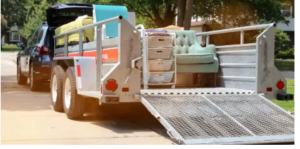If you’re moving, redecorating, or decluttering, you may have some old furniture that won’t fit into your new space. Perhaps selling or giving it away would work, but what else can be done with it?
 Contrary to plastic or common waste items, budget furniture removals Adelaide require more thought and planning than simply placing them outside on garbage collection day.
Contrary to plastic or common waste items, budget furniture removals Adelaide require more thought and planning than simply placing them outside on garbage collection day.
Dismantling
Preparing pieces for transport when moving large furniture can be critical in avoiding damage and ensuring your move goes as smoothly as possible. It involves dismantling them as much as possible beforehand so they will fit through doors and hallways easily, and for that, you will require tools like sealable zip storage bags and small containers (for keeping screws together), screwdriver, wrench, markers/labels etc.
Help from friends is also recommended when moving furniture pieces that require two people, making the process easier and more efficient. Furthermore, seeking assistance will prevent costly mistakes that could damage your furniture during transport, such as banging the sides into walls, causing expensive damage that could have been avoided with additional help from others. Please make a list of parts for each piece so reassembling them at your new home will be simpler.
Packing
Furniture can be very heavy and requires expert handling in order to avoid injuries and save both time and effort. Hiring professionals for this task can also prevent damage to walls and ceilings that would arise when dealing with heavy pieces alone.
Donating or selling old furniture items might help create more space for new belongings if you are downsizing to a smaller property. Craigslist or eBay classified websites also offer excellent options to sell unwanted pieces.
Many furniture removal companies provide door-to-door services, which include collecting and transporting the furniture directly to its new location. It makes budget furniture removals Adelaide services attractive for those who would instead leave all the hard work to someone else. Furthermore, most companies are committed to environmentally sustainable waste management practices, meaning your unwanted items won’t end up in landfills.
Moving
When moving furniture, the first step should be preparation. Please make sure each piece is thoroughly cleaned and marked so you can find it later and reduce as much risk of damage as possible during transit. It will also allow you to decide whether disassembling is required.
After creating a route plan and clearing away any obstructions to its progress, clear away space around the furniture to mark its destination on a map – this will prevent accidents during transport while making life simpler for both you and the removal company.
Many top-rated junk removal services now provide eco-friendly waste disposal, so unwanted items can be donated or repurposed instead of filling landfills.
Recycling
If you have old furniture that no longer serves its purpose, there are multiple recycling methods. Recycling furniture helps ensure it does not end up clogging landfills while supporting sustainable environments – and there are various recycling solutions for unwanted furniture, such as repurposing and upcycling options available to you.
Donating furniture to local non-profit organisations and charities is a great way to give back and reduce waste. Consignment stores or yard sales might also accept your used pieces; if you own a large truck with flatbed capability, you could haul your unwanted pieces directly to a landfill, recycling centre, scrap metal dealer, or composting facility.
You can also make your DIY project by repurposing your old furniture into something new and useful. Tons of blogs and websites offer tips and tricks for upcycling and reusing old furniture to create new pieces for your home. It is a great way to give new life to a piece of furniture that you no longer need or want, and it can be fun to do as a family or community project.